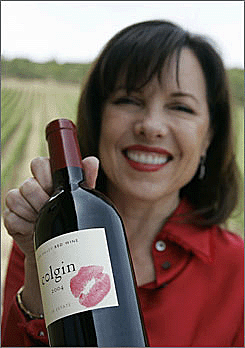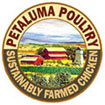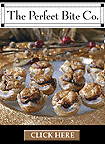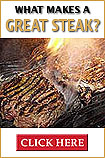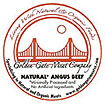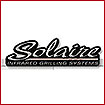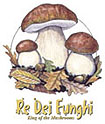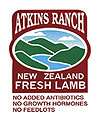High-tech systems cork counterfeit wine
By Michelle Locke, Associated Press
NAPA,
Calif. - At Colgin Cellars, a kiss is not
just a kiss.
For
years, vintner Ann Colgin has sealed bottles
of her sought-after wine headed for auction
with a bright-red lipsticked kiss on the
label, a charming, and undeniably personal,
certificate of authenticity.
But
with concerns growing about counterfeiters,
she and other Napa Valley vintners are turning
to high-tech fraud prevention so customers
can feel confident they're taking home genuine
wine.
Colgin,
who hasn't yet had someone attempt to fake
her wine and hopes to keep it that way,
recently signed a deal with Eastman Kodak
on a system that employs invisible markers
added to inks and other packaging components.
|
Ann
Colgin holds up a feshly-kissed bottle
of Cabernet Sauvingon at her winery
in St. Helena, Calif. For years, vintner
Ann Colgin has added a playful seal
of authenticity to bottles of her
sought-after wines headed for auction.
- By Eric Risberg, AP |
"Our
wine is essentially a luxury good and I
do believe that these rare and collectible
luxury goods are targets," said Colgin,
whose ultra-premium wines can fetch hundreds
of dollars a bottle at auction.
With
the new system, buyers at auctions and other
secondary markets can ask the winery to
scan their labels if they have any doubts,
although the measures are primarily intended
to put off counterfeiters.
It's
hard to gauge how wide a problem counterfeits
are in the U.S. wine industry, which according
to a recent industry commissioned study
pumps $162 billion a year into the economy,
including grape-growing, tourism and other
related impacts.
Wine
Spectator magazine has reported that some
experts believe as much as 5% of wines sold
in secondary markets such as auctions may
be counterfeit, although others consider
that figure too high.
Unlike
CD and DVD counterfeiting, wine piracy hasn't
become a noticeable drain on the industry
yet, so U.S. vintners are acting defensively.
There
have been cases of counterfeit wines reported
in Europe and China, and this spring there
were reports that federal authorities in
New York were investigating whether counterfeits
were passed off as rare vintages, including
some said to be part of Thomas Jefferson's
collection. According to a lawsuit believed
to have partly prompted the investigation,
five bottles of wine - including four said
to be owned by Jefferson - sold for $500,000.
Regardless
of how many phony pinots are out there,
it seems clear that interest in preventing
fraud has spiked as new technology has become
available, said Daniel Welty, marketing
manager for Petaluma-based John Henry Packaging,
which prints labels for wineries as well
as other clients.
"It's
more of a case the tools are becoming more
available to combat the problem," he
said.
Anti-fraud
measures being explored include tamper-proof
seals, radio-frequency identification chips
sunk into corks and using inks that only
show up under special lights.
The
Kodak technology used by Colgin and three
other high-end Napa wineries involves putting
proprietary markers, which Kodak will describe
only as a "forensically undetectable
material" into things such as printing
inks, varnishes, paper, etc., that can only
be detected by a Kodak handheld reader,
also proprietary, which incorporates laser
technology.
The
idea is to come up with something easy to
use and hard to detect, meaning it's that
much harder for counterfeiters to figure
out and copy, said Steve Powell, general
manager and director for Security Solutions,
Kodak's Graphic Communications Group.
The
John Henry packaging company is using technology
developed by Hewlett-Packard to develop
multicolored codes or graphics into labels.
Colors and character combinations can be
constantly changed to thwart copycats, Welty
said.
The
codes can be microprinted, so they're visible
only with magnification, or in type that
can be easily read.
"It's
really cool. It's really simple, and nobody
can know what the next codes are,"
he said.
Fine
wine can be expensive straight from the
shelf, but when it comes to charity affairs,
such as the Napa Valley annual wine auction
going on this week, prices can go sky high.
Last
year's high bid was $1.05 million for five
large-format bottles of Staglin Family Vineyard
Meritage blend, along with a trip to France.
Like
Colgin, the Staglins haven't run across
fakes so far, but they decided to take a
preemptive step and use the Kodak system
on large bottles that are likely to end
up being traded, said Garen Staglin.
"We
want to be sure that we can give our customers
the assurance of the integrity of our brand
and label after we spent so much time and
effort to try to accomplish what we've done
over the years," he said.
In
San Francisco, Jerome Zech, CEO of WineBid.com,
which had $22.5 million in sales last year,
doesn't think wine fraud is prevalent.
But
with some high-end wines starting at $500
a bottle for pre-release prices, he's all
for the industry's move toward anti-counterfeiting
measures. "It'll help them and it'll
help us as well."
WineBid's
officials authenticate wine by only dealing
with people they trust and checking bottles
against a vast database, Zech said. If something
seems off, "we just don't even question
whether or not we would put it on our site.
We would just reject the bottle."
So
when someone showed up with two bottles
of a famous French wine - and the glass
was different for each bottle, "We
go, 'Are you joking? Where did you get these
things," Zech said. "He had some
story, and we just said, 'Sorry."'
Copyright
2007 The Associated Press. All rights reserved.
|



